
Coastlines reporting initiative. For more information, go to
pulitzercenter.org/connected-coastlines.
This story is part of a series on marshes in Maine co-published with the Portland Press Herald.
HANCOCK — On a warm bright afternoon, with just enough breeze to keep the mosquitoes at bay, Tatia Bauer crouched down and brushed her hand over tufts of bright green saltmarsh cordgrass that had sprouted in the high marsh of Old Pond, just south of Route 1 in Hancock.
“This is amazing!” said Bauer, catching a bit of vegetation between her thumb and forefinger.
The grass had sprouted on a mound of peat, several feet in diameter, hovering just a few inches higher than the surface of the marsh — hardly noticeable as a mound at all, except for a patchy ring around the edge where the grass had yet to take.
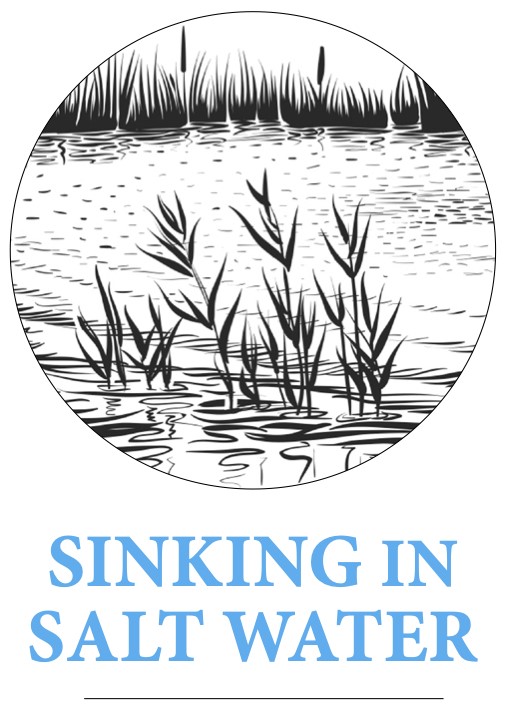
But it was an important marker of success: Bauer and her colleagues had piled dirt there the year before, hoping it would eventually become nesting ground for the Nelson’s Sparrow, a furtive, short-tailed bird that breeds mainly in marshes on the Great Plains and Atlantic coast of the United States, including in salt marshes along the coast of Maine.
The sparrow, which bears a striking resemblance to the Saltmarsh sparrow (the two were thought to be the same species until the late 1990s), nests on the surface of the marsh, just above the high-water line.
“Which is a wonderful strategy, because usually it’s dense and there’s a lot of food around, there’s a lot of insects,” said Bauer, a regional stewardship manager with Maine Coast Heritage Trust.
Nesting on the marsh surface is not, however, a great strategy in the face of rapidly rising seas, said Bauer, “when a little fledgling’s life is in the balance of a couple of centimeters.” As tides creep ever higher, eggs can float away and fledglings may drown.
Building mounds for nesting sparrows is part of a larger ongoing restoration project at Old Pond, which is nestled deep in the tidal inlets of Frenchman Bay. Rapidly rising seas threaten to drown both the marsh and the sparrows’ nesting grounds, and advocates hope the restoration, a slow process that the Trust began several years ago, will help both survive.
Under normal circumstances, coastal marshland is able to keep up with rising seas, as plants trap sediment and slowly build the marsh surface, pushing it inland.
But with sea levels rising faster in Maine than they have at any time in the last 5,000 years, and development preventing marshes from migrating, marshes are at risk of drowning, unable to build the surface enough.
Complicating the issue are centuries of alterations, like dikes and ditches, that prevent water from flowing through the marsh as it should. Old Pond, like most marshes on the coast of Maine, was once farmed for salt hay and other important grass species, including the soft green Spartina patens covering much of Old Pond.
To increase their yields, salt hay farmers would dig ditches in marshes to direct the water one way or another, piling the soil up on either side and creating embankments. In Old Pond, the historic ditches run parallel to one another throughout the marsh at consistent intervals.
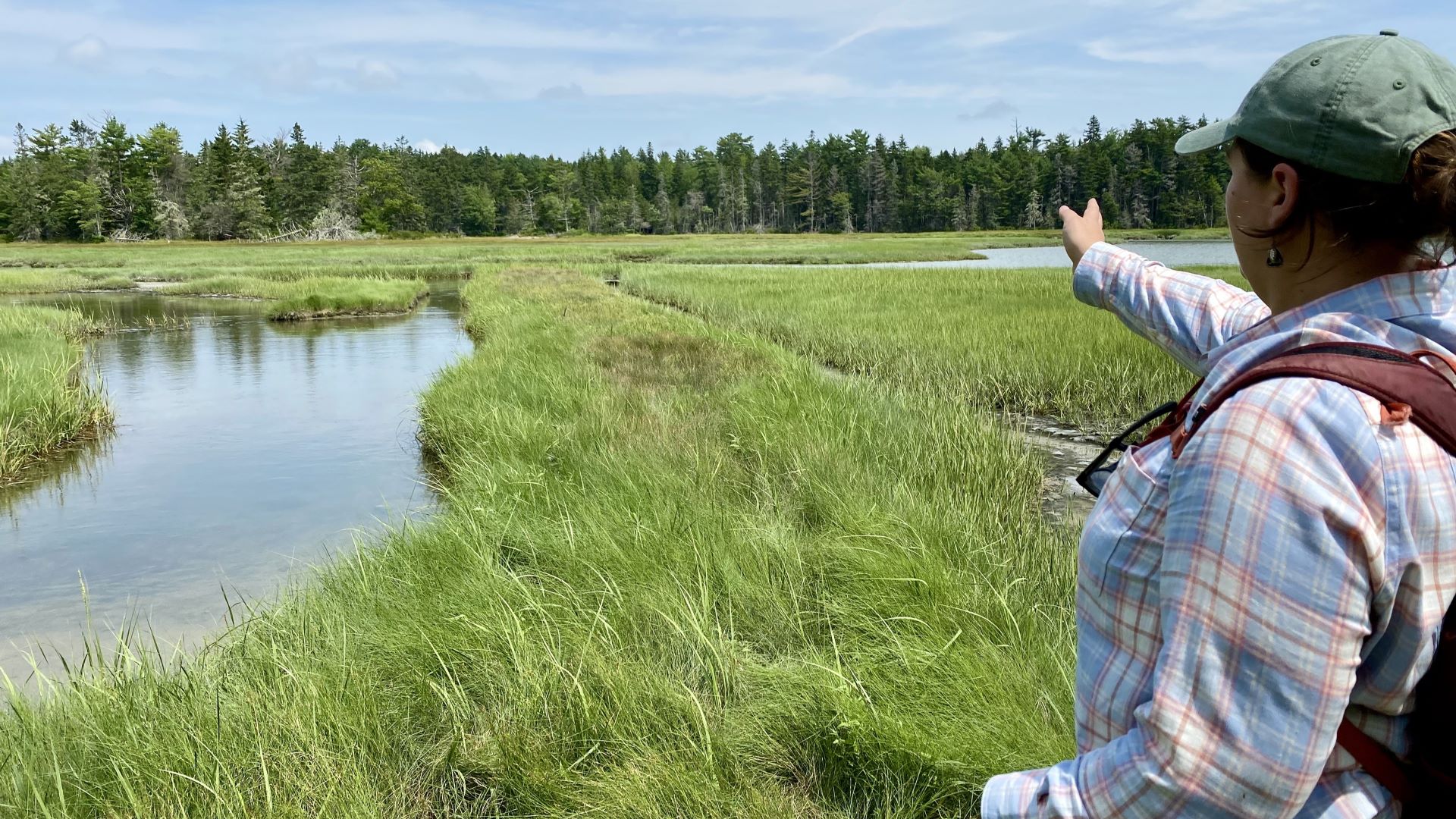
As haying declined and the ditches were abandoned, they either filled with sediment or standing water pooled in them, said Bauer, “wreaking havoc” on the ecosystem, which depended on water flowing through the marsh unimpeded. Plants in the pools became waterlogged and drowned, while those cut off from the tides entirely began to wither and die.
“Not only do we have the pools where the plants die,” said Bauer, “but now we have all of this oxidation of the sediment, which is also slowly decomposing the peat and causing the marsh to sink.”
That becomes a destructive cycle in the face of rising seas: a sinking marsh floods more often, preventing certain plants from growing and trapping sediment, which is needed to build up the marsh surface.
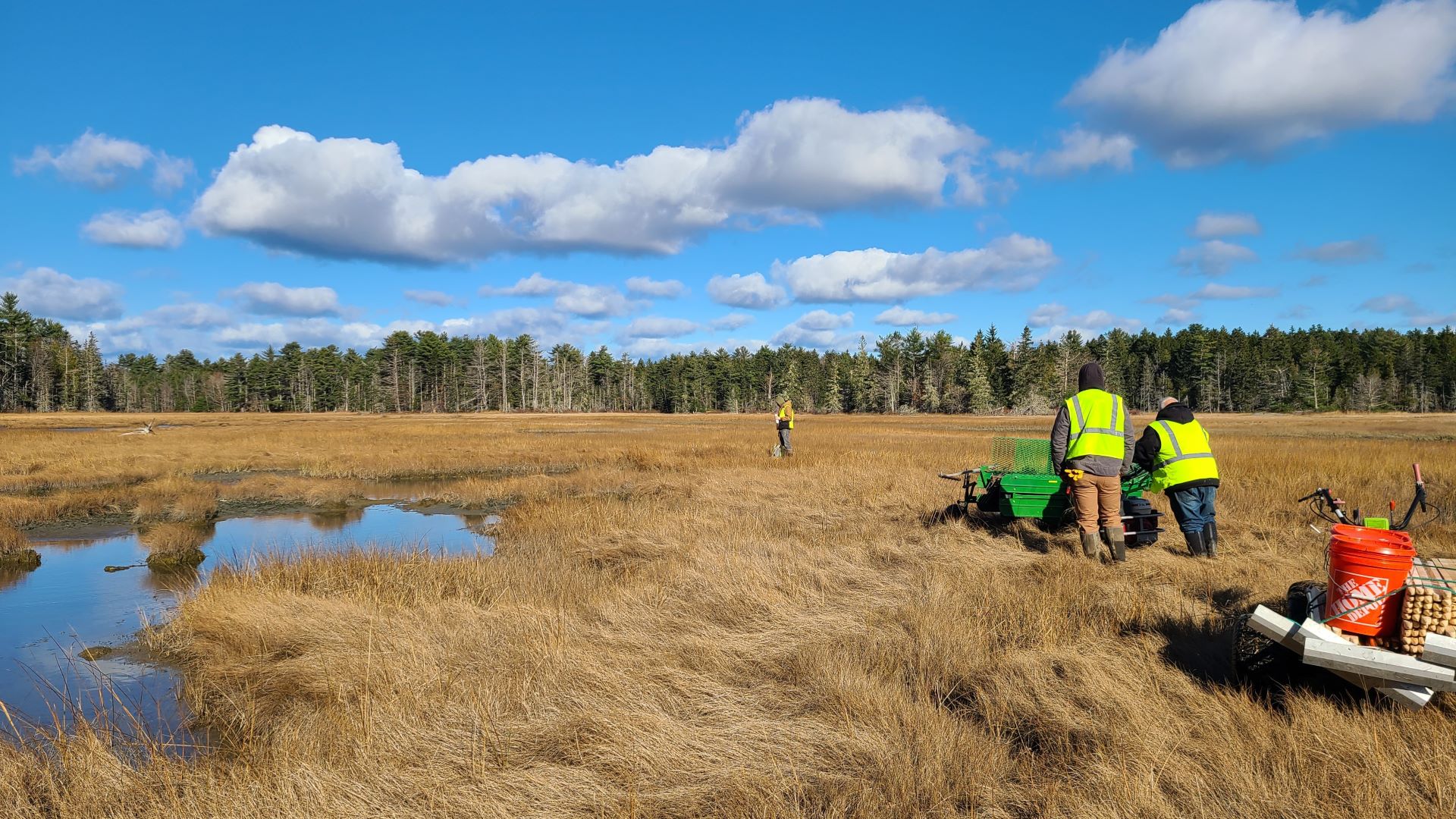
One of the ways to restore proper tidal flow, experts say, is to dig more ditches — known as runnels — in certain strategic spots throughout the marsh.
“The really, really hard and fast rule is not to just go and dig ditches or dig channels anywhere you want,” said Geoff Wilson, a marsh restoration specialist who is working with MCHT to restore tidal flow to Old Pond. It’s also vital, said Wilson, to avoid reanimating the “zombie ditches,” channels that were dug years ago and have since filled with sediment.
Avoiding zombie ditches requires having a good idea of where they are in the first place. Since there are few records of this, that means experts like Wilson must painstakingly map the undulations on the surface of the marsh — a task that is both art and science, requiring many hours of walking and studying the marsh throughout the year.
“We don’t want to dig randomly,” said Bauer. “We kind of connect certain channels in specific ways to make sure that the tidal energy can maintain those channels.”
The work is mostly undertaken in the fall and winter, when biomass is at its peak or the ground is frozen, to avoid disturbing vegetation. Remediation typically takes several years, allowing time for plants can take hold in the soil and capture sediment.
Once the old ditching has been mapped, Wilson, who has been restoring marshes up and down the eastern seaboard for decades, creates an outline of where new runnels should be dug and channels should be filled.
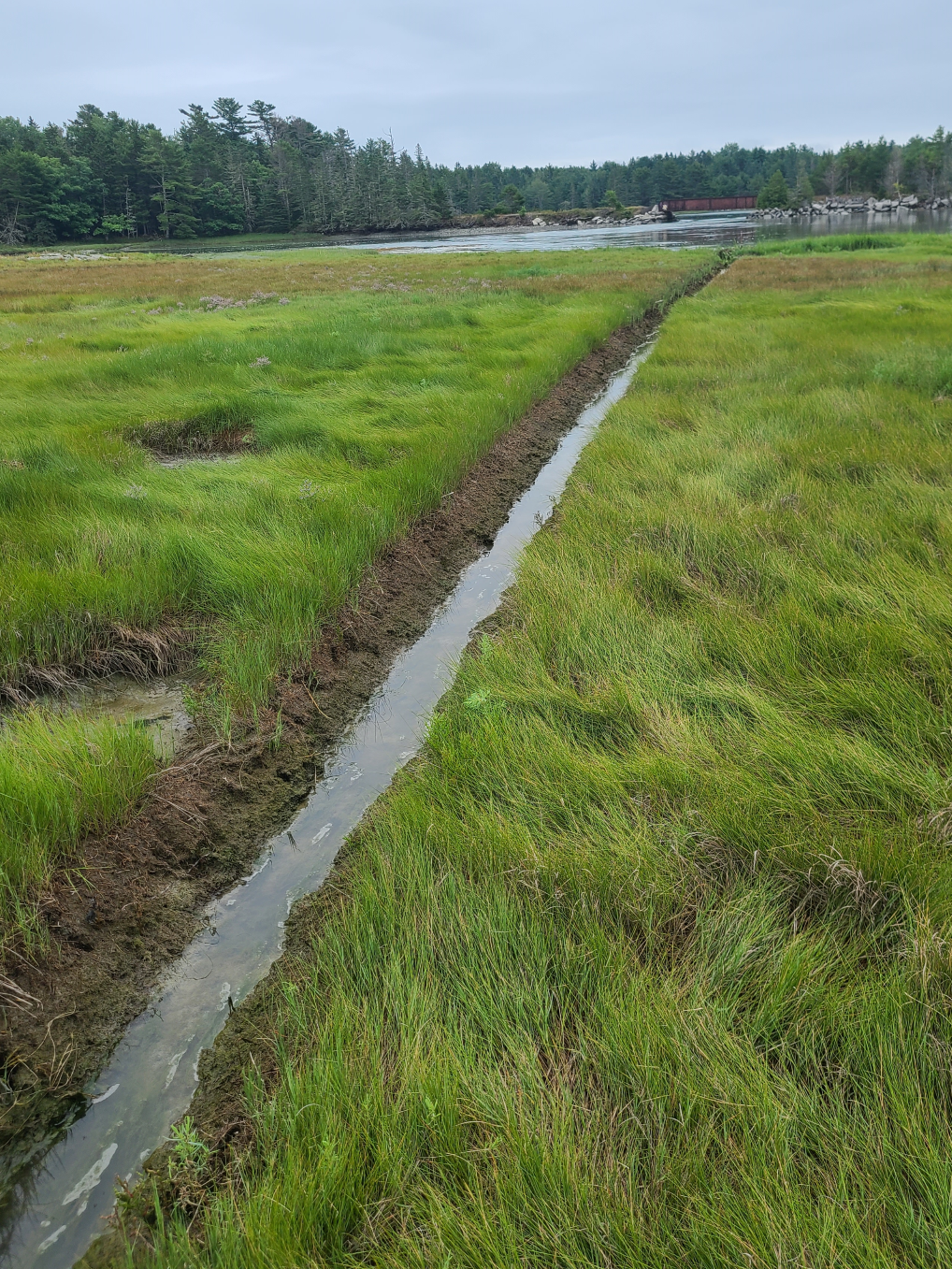
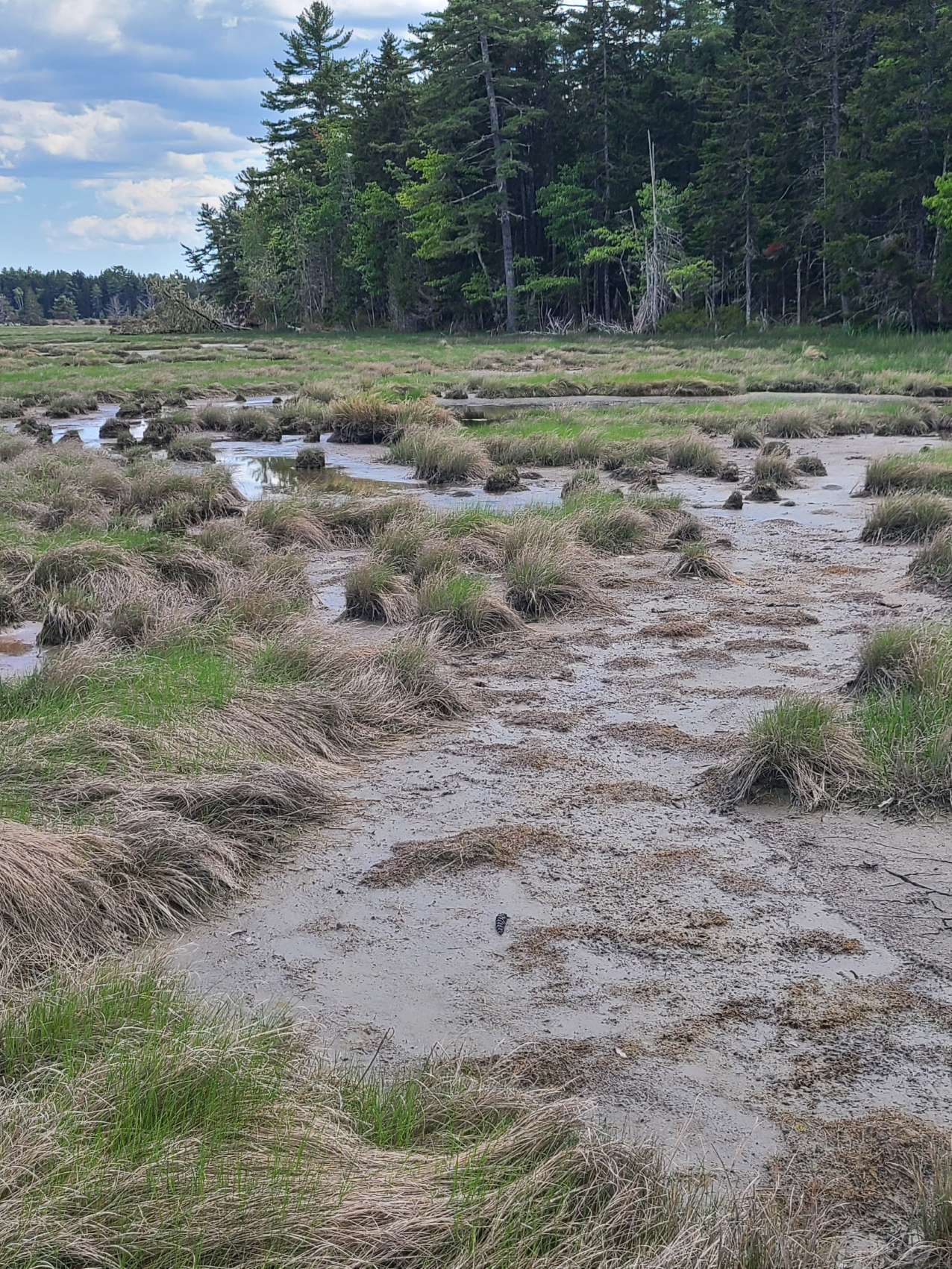
The goal is a healthy salt marsh, with no standing pools, said Bauer, that is almost entirely covered by vegetation, with water flowing at a consistent level throughout.
“The whole goal is that having the systems be healthy will allow them to persist with sea level rise,” she said “There is a chance that this could rise the foot and a half by 2030 or 2050 and still be marsh, but it is reliant on the fact that this whole plumbing issue gets fixed.”
It’s also reliant on the marsh having somewhere to go it is pushed inland. In the case of Old Pond, the land around the marsh is both conserved and at a low enough elevation that the marsh should be able to shift as the seas come up.
“We call it a belt-and-suspenders approach,” said Bauer. “The suspenders is like the marsh migration. We have a place for the marshes to go. And then the belt is the restoration, which makes sure that the marsh is as healthy as possible. As sea levels rise, the marsh will follow it if it’s a healthy marsh.”
Disclosure: Kate Cough’s husband, Caleb Jackson, works with Maine Coast Heritage Trust. He is not involved in marsh restoration.







